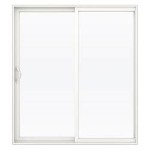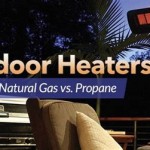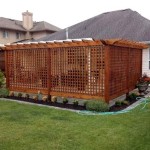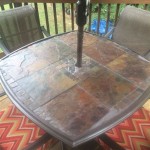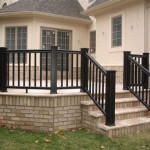Patio Heater Wall Mounted: Optimizing Outdoor Comfort
Wall-mounted patio heaters offer a compelling solution for extending the usability of outdoor spaces, providing targeted warmth and efficient heating without occupying valuable floor space. These heaters are particularly advantageous for patios, balconies, and covered outdoor seating areas where maximizing space is a priority. Understanding the various types, features, and installation considerations is crucial for selecting the optimal wall-mounted patio heater for specific needs and environments.
The purpose of this article is to provide a comprehensive overview of wall-mounted patio heaters, addressing their types, benefits, installation procedures, maintenance requirements, and important safety considerations. This information is intended to assist homeowners and businesses in making informed decisions when selecting and utilizing these heating appliances.
Types of Wall-Mounted Patio Heaters
Wall-mounted patio heaters are broadly categorized by their fuel source and heating technology. The primary types include electric, propane, and natural gas heaters, each with distinct advantages and disadvantages. Understanding these differences is essential for selecting the most suitable heater for a particular application.
Electric Patio Heaters: Electric patio heaters utilize electricity to generate heat, typically through infrared radiation. These heaters are generally cleaner and quieter than gas-powered options. They require access to an electrical outlet or hardwiring, which may necessitate professional installation. Electric heaters are often preferred for smaller spaces due to their lower heat output compared to gas models. The heat is emitted immediately upon activation, providing instant warmth. Furthermore, electric heaters produce no emissions, making them an environmentally conscious choice.
Electric heaters can be further categorized into different types: radiant heaters, halogen heaters, and carbon fiber heaters. Radiant heaters use a resistance element to produce heat, halogen heaters utilize a halogen bulb to generate intense infrared radiation, and carbon fiber heaters employ carbon fiber filaments for efficient heat distribution. Each type offers varying levels of energy efficiency and heat output. Selecting the appropriate electric heater depends on the size of the area to be heated and the desired level of warmth.
Propane Patio Heaters: Propane patio heaters use liquid propane gas as fuel to generate heat. These heaters typically offer higher heat output than electric models, making them suitable for larger outdoor spaces. They require a propane tank connection, which can be either a portable tank or a connection to a larger, remote fuel supply. Propane heaters offer greater flexibility in terms of placement, as they do not require direct access to an electrical outlet. However, they produce emissions and require careful ventilation to ensure safe operation.
The heat produced by propane heaters is generally more intense than electric heaters, providing a more robust warming effect in cooler temperatures. Propane heaters are popular for commercial applications, such as restaurant patios and outdoor event spaces, due to their ability to heat large areas quickly and effectively. Regular monitoring of the propane tank level is necessary to ensure uninterrupted operation. Furthermore, the safe storage and handling of propane tanks are critical considerations.
Natural Gas Patio Heaters: Natural gas patio heaters are similar to propane heaters in terms of their heating technology, but they utilize natural gas as fuel. These heaters require a permanent connection to a natural gas supply line, which necessitates professional installation. Natural gas heaters offer a continuous fuel supply, eliminating the need for tank refills. They also tend to be more cost-effective in the long run compared to propane heaters, as natural gas is generally less expensive than propane. However, the installation process can be more complex and costly due to the required gas line connection.
Natural gas heaters provide a consistent and reliable heat source, making them suitable for residential and commercial applications where a continuous heating solution is desired. They are typically more powerful than electric heaters, allowing them to heat larger outdoor areas effectively. Similar to propane heaters, natural gas heaters produce emissions and require proper ventilation. Regular inspection of the gas line and heater components is essential to ensure safe operation and prevent gas leaks.
Key Features and Considerations
When selecting a wall-mounted patio heater, several key features and considerations should be taken into account to ensure optimal performance and safety. These factors include heat output, heating area, mounting options, safety features, and weather resistance.
Heat Output and Heating Area: The heat output of a patio heater is measured in British Thermal Units (BTUs) for gas heaters and in watts or kilowatts for electric heaters. Higher BTU or wattage ratings indicate greater heat output. The appropriate heat output for a specific application depends on the size of the area to be heated and the average ambient temperature. Larger areas and colder climates require heaters with higher heat output. Manufacturers typically provide guidelines on the recommended heating area for each model. Careful consideration of these guidelines is essential for selecting a heater that can effectively warm the desired space.
It's also important to consider the shape of the heating pattern. Some heaters produce a concentrated beam of heat, while others provide a wider, more diffused coverage. The heating pattern should be appropriate for the configuration of the outdoor space. For example, a narrow beam of heat may be suitable for a small seating area, while a wider beam may be better for a larger, more open patio.
Mounting Options: Wall-mounted patio heaters typically come with mounting brackets that allow them to be securely attached to a wall or other vertical surface. The mounting brackets should be sturdy and durable to ensure that the heater remains securely in place. Consider the material of the mounting surface and select appropriate mounting hardware. For example, mounting a heater on a brick wall may require different hardware than mounting it on a wooden wall. Adjustable mounting brackets allow for tilting the heater to direct the heat where it is needed most. Heaters that can swivel provide even greater flexibility in directing the heat.
It's critical to follow the manufacturer's instructions for mounting the heater to ensure a safe and secure installation. Improperly mounted heaters can pose a safety hazard. The mounting location should also be chosen to minimize the risk of the heater being accidentally bumped or damaged. Clearance requirements provided by the manufacturer should be strictly adhered to.
Safety Features: Safety features are paramount when selecting a wall-mounted patio heater. Look for features such as automatic shut-off mechanisms, tip-over protection, and overheat protection. Automatic shut-off mechanisms will turn off the heater if it is accidentally tipped over or if it overheats, preventing potential fires or other hazards. Tip-over protection is particularly important for propane heaters, as tipping over can lead to gas leaks. Overheat protection will shut off the heater if it becomes too hot, preventing damage to the heater and reducing the risk of fire.
Some heaters also feature cool-touch housings, which reduce the risk of burns if someone accidentally touches the heater. It's essential to read and understand the safety instructions provided by the manufacturer before operating the heater. Regular inspection of the heater and its components is also crucial to identify and address any potential safety hazards.
Weather Resistance: Outdoor patio heaters are exposed to the elements, so it's essential to select a heater that is designed to withstand the weather conditions in the area. Look for heaters with weather-resistant housings and components that are resistant to rust, corrosion, and water damage. Some heaters are specifically designed for use in humid or coastal environments. The Ingress Protection (IP) rating indicates the level of protection against solid objects and liquids. A higher IP rating indicates greater protection. Select a heater with an appropriate IP rating for the intended use.
Even with weather-resistant features, it's recommended to protect the heater from extreme weather conditions, such as heavy rain or snow. Consider using a protective cover when the heater is not in use. Regular cleaning and maintenance can also help to extend the life of the heater and prevent damage from the elements.
Installation and Maintenance
Proper installation and regular maintenance are essential for ensuring the safe and efficient operation of a wall-mounted patio heater. Incorrect installation can pose a safety hazard, while inadequate maintenance can reduce the heater's lifespan and performance.
Installation Procedures: The installation process for a wall-mounted patio heater varies depending on the type of heater and the mounting surface. Electric heaters typically require wiring to an electrical outlet or hardwiring to a dedicated circuit. Propane and natural gas heaters require connection to a gas supply line. It is strongly recommended to hire a qualified electrician or gas technician to perform the installation, especially for gas heaters. This ensures that the installation is done safely and in accordance with local building codes.
Before beginning the installation, carefully read and understand the manufacturer's instructions. Ensure that the mounting surface is strong enough to support the weight of the heater. Use appropriate mounting hardware for the type of wall being used. Follow all safety precautions when working with electricity or gas. After the installation is complete, test the heater to ensure that it is functioning properly and that there are no gas leaks. Consider using leak detection solution on gas connections to verify integrity.
Maintenance Requirements: Regular maintenance is essential for keeping a wall-mounted patio heater in good working condition. Clean the heater regularly to remove dust, dirt, and debris. Use a soft cloth and mild detergent to clean the housing and reflector. Avoid using abrasive cleaners or solvents that could damage the finish. Inspect the heater's components regularly for signs of wear or damage. Check the electrical connections, gas lines, and burner assembly. Replace any damaged or worn parts promptly.
For gas heaters, clean the burner assembly regularly to prevent clogs. Remove any debris or obstructions that could interfere with the burner's operation. Check the gas line for leaks. For electric heaters, check the electrical connections for loose wires or corrosion. Periodically inspect the mounting brackets and hardware to ensure that the heater is securely mounted. Store the heater in a dry, protected location during the off-season to prevent damage from the elements.
By understanding the different types of wall-mounted patio heaters, considering key features, and following proper installation and maintenance procedures, individuals and businesses can effectively utilize these appliances to create comfortable and inviting outdoor spaces.

Wall Mounted Patio Heaters From Herschel Stylish Outdoor

Wall Mounted Patio Heaters Herschel Infrared Ltd

Wall Mounted Patio Heater Remote Control 2kw Silver Slim Design

2000w Wall Mounted Adjustable Electric Outdoor Heater Cashotel

Ecostrad Apex Infrared Patio Heater Black 1 8kw

Wall Mounted Patio Heaters From Herschel Stylish Outdoor

2400w Outdoor Patio Heater Wall Mounted With Smart Thermostat Ecoart Heating Community Infrared

1300w Wall Mounted Patio Heater For Fast Delivery
2500w Infrared Patio Heater Wall Mounted Indoor Outdoor Garden Electric Warmer

Livingandhome Winter Wall Mounted Electric Patio Heater With Remote Control 63cm

